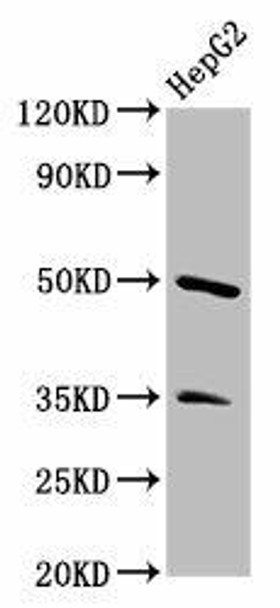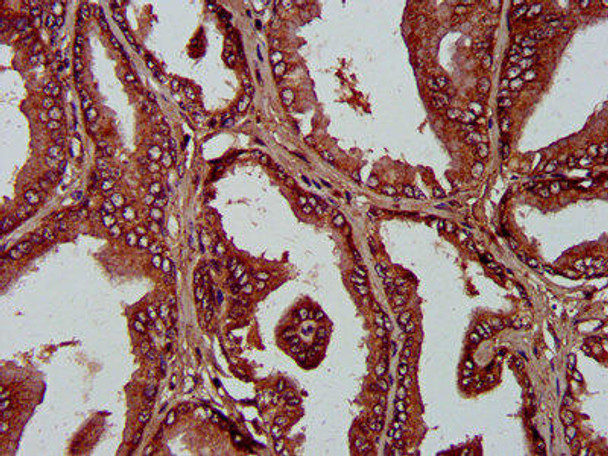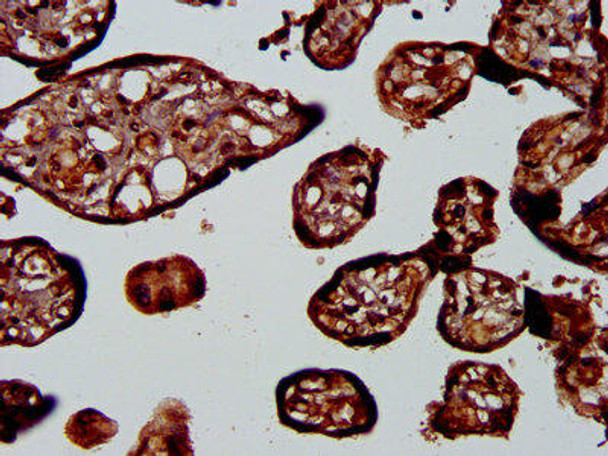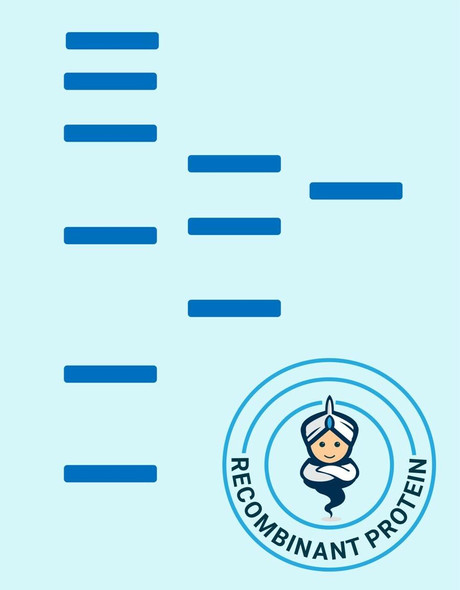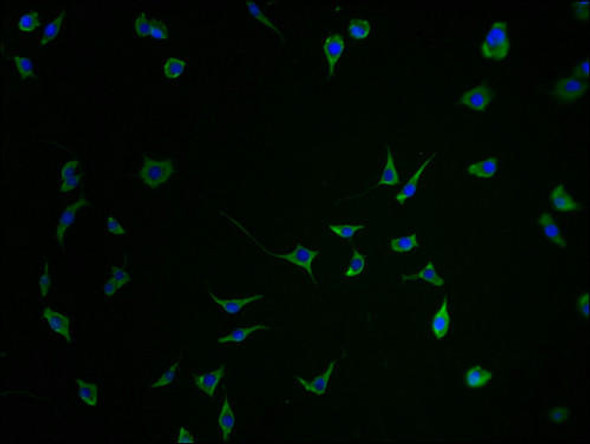Description
PLA1A Antibody (PACO57920)
The PLA1A Polyclonal Antibody (PAC057920) offered by AssayGenie is an essential tool for researchers studying PLA1A, a key enzyme involved in lipid metabolism. This antibody, raised in rabbits, is highly specific and reacts strongly with human samples, making it ideal for use in Western blot applications. By binding to the PLA1A protein, this antibody enables accurate detection and analysis in a variety of cell types, particularly in the fields of lipid metabolism and lipid-related disorders.PLA1A, also known as Phospholipase A1A, is crucial for the breakdown of phospholipids and the generation of bioactive lipids involved in various physiological processes.
Dysregulation of PLA1A has been implicated in diseases such as cardiovascular disorders, inflammatory conditions, and metabolic diseases. Research on PLA1A is essential for understanding its role in lipid metabolism and developing targeted therapies for related diseases.By utilizing the PAC057920 antibody, researchers can gain valuable insights into the function of PLA1A and its implications in human health. This antibody is a valuable tool for furthering research in lipid metabolism, cardiovascular health, and inflammatory diseases, ultimately contributing to the development of novel therapeutic interventions.
| Antibody Name: | PLA1A Antibody (PACO57920) |
| Antibody SKU: | PACO57920 |
| Size: | 50ug |
| Host Species: | Rabbit |
| Tested Applications: | ELISA, WB, IHC |
| Recommended Dilutions: | ELISA:1:2000-1:10000, WB:1:500-1:5000, IHC:1:200-1:500 |
| Species Reactivity: | Human |
| Immunogen: | Recombinant Human Phospholipase A1 member A protein (293-398AA) |
| Form: | Liquid |
| Storage Buffer: | Preservative: 0.03% Proclin 300 Constituents: 50% Glycerol, 0.01M PBS, pH 7.4 |
| Purification Method: | >95%, Protein G purified |
| Clonality: | Polyclonal |
| Isotype: | IgG |
| Conjugate: | Non-conjugated |
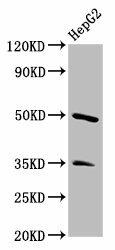 | Western Blot. Positive WB detected in: HepG2 whole cell lysate. All lanes: PLA1A antibody at 3.4µg/ml. Secondary. Goat polyclonal to rabbit IgG at 1/50000 dilution. Predicted band size: 50, 41, 48, 32 kDa. Observed band size: 50 kDa. |
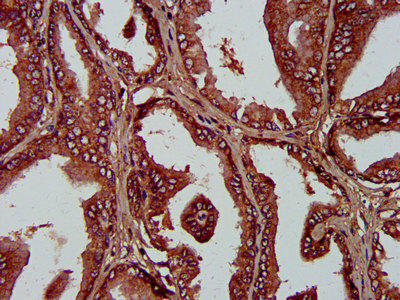 | IHC image of PACO57920 diluted at 1:400 and staining in paraffin-embedded human prostate tissue performed on a Leica BondTM system. After dewaxing and hydration, antigen retrieval was mediated by high pressure in a citrate buffer (pH 6.0). Section was blocked with 10% normal goat serum 30min at RT. Then primary antibody (1% BSA) was incubated at 4°C overnight. The primary is detected by a biotinylated secondary antibody and visualized using an HRP conjugated SP system. |
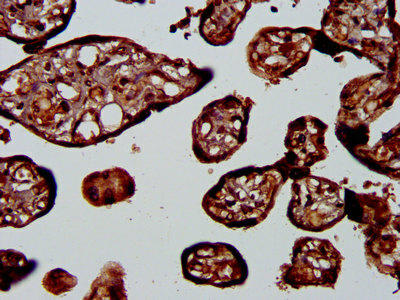 | IHC image of PACO57920 diluted at 1:400 and staining in paraffin-embedded human placenta tissue performed on a Leica BondTM system. After dewaxing and hydration, antigen retrieval was mediated by high pressure in a citrate buffer (pH 6.0). Section was blocked with 10% normal goat serum 30min at RT. Then primary antibody (1% BSA) was incubated at 4°C overnight. The primary is detected by a biotinylated secondary antibody and visualized using an HRP conjugated SP system. |
| Background: | Hydrolyzes the ester bond at the sn-1 position of glycerophospholipids and produces 2-acyl lysophospholipids. Hydrolyzes phosphatidylserine (PS) in the form of liposomes and 1-acyl-2 lysophosphatidylserine (lyso-PS), but not triolein, phosphatidylcholine (PC), phosphatidylethanolamine (PE), phosphatidic acid, (PA) or phosphatidylinositol (PI). Isoform 2 hydrolyzes lyso-PS but not PS. Hydrolysis of lyso-PS in peritoneal mast cells activated by receptors for IgE leads to stimulate histamine production. |
| Synonyms: | Phospholipase A1 member A (EC 3.1.1) (Phosphatidylserine-specific phospholipase A1) (PS-PLA1), PLA1A, NMD PSPLA1 |
| UniProt Protein Function: | PLA1A: Hydrolyzes the ester bond at the sn-1 position of glycerophospholipids and produces 2-acyl lysophospholipids. Hydrolyzes phosphatidylserine (PS) in the form of liposomes and 1- acyl-2 lysophosphatidylserine (lyso-PS), but not triolein, phosphatidylcholine (PC), phosphatidylethanolamine (PE), phosphatidic acid (PA) or phosphatidylinositol (PI). Isoform 2 hydrolyzes lyso-PS but not PS. Hydrolysis of lyso-PS in peritoneal mast cells activated by receptors for IgE leads to stimulate histamine production. Belongs to the AB hydrolase superfamily. Lipase family. 3 isoforms of the human protein are produced by alternative splicing. |
| UniProt Protein Details: | Protein type:Secreted, signal peptide; EC 3.1.1.-; Secreted; Phospholipase Chromosomal Location of Human Ortholog: 3q13.13-q13.2 Cellular Component: acrosomal membrane Molecular Function:phospholipase A1 activity Biological Process: lipid catabolic process; lipid metabolic process; phosphatidylserine metabolic process |
| NCBI Summary: | The protein encoded by this gene is a phospholipase that hydrolyzes fatty acids at the sn-1 position of phosphatidylserine and 1-acyl-2-lysophosphatidylserine. This secreted protein hydrolyzes phosphatidylserine in liposomes. Three transcript variants encoding different isoforms have been found for this gene.[provided by RefSeq, May 2011] |
| UniProt Code: | Q53H76 |
| NCBI GenInfo Identifier: | 124015212 |
| NCBI Gene ID: | 51365 |
| NCBI Accession: | Q53H76.2 |
| UniProt Secondary Accession: | Q53H76,O95991, Q86WX6, Q9UPD2, B2R8V2, B4DXA2, |
| UniProt Related Accession: | Q53H76 |
| Molecular Weight: | 31,285 Da |
| NCBI Full Name: | Phospholipase A1 member A |
| NCBI Synonym Full Names: | phospholipase A1 member A |
| NCBI Official Symbol: | PLA1A |
| NCBI Official Synonym Symbols: | PSPLA1; PS-PLA1 |
| NCBI Protein Information: | phospholipase A1 member A |
| UniProt Protein Name: | Phospholipase A1 member A |
| UniProt Synonym Protein Names: | Phosphatidylserine-specific phospholipase A1; PS-PLA1 |
| Protein Family: | Phospholipase |
| UniProt Gene Name: | PLA1A |
| UniProt Entry Name: | PLA1A_HUMAN |
| Antibodies |
| PLA1A Antibody (PACO02962) |
| Secondary Antibody |
| Anti-HRP Goat Anti-Rabbit IgG (H+L) Antibody (CABS014) |
| Recommended Products |
| Anti-FITC Goat Anti-Rabbit IgG (H+L) Antibody (CABS011) |
| Anti-HRP-conjugated Beta Actin Antibody (CABC028) |

